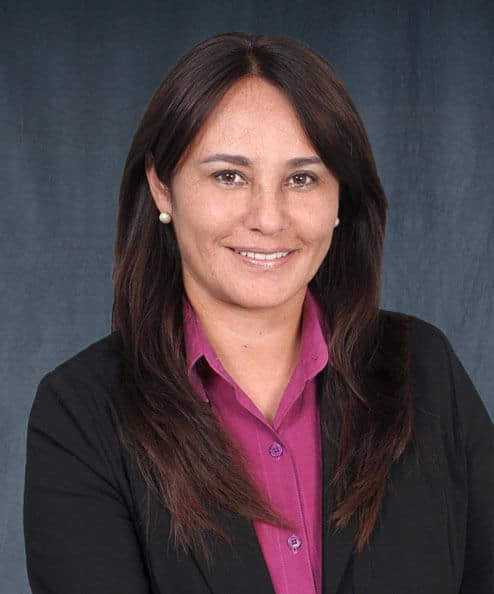Sustainable ventures in Peru – opportunities for highly trained talent
Lima, Peru – With more than two decades of uninterrupted economic growth and single-digit inflation, the Peruvian economy provides a sharp contrast to those of other LATAM countries. The Central Reserve Bank (BCR) has projected that Peru will continue to lead the economic growth in the region for 2017 [1].

Industry represents around 35% of Peru's GDP, and has undergone a process of modernisation in recent years, increasing employment in the country’s primary industrial areas. A report by the Graduate Management Admission Council in 2016 revealed that 54% of Peruvian companies have plans for expansion.
However, a skills shortage in the labour market continues to be an issue for employers, with over 68% of companies in Peru reporting a talent shortfall. The main issues are a lack of available applicants, and deficiencies in hard skills and experience. Skilled trade workers are amongst the hardest to source, with management executives also in high demand.
Moreover, developments over the past three years have indicated that there is great potential in the renewable energy field, and the demand for talent in this area is expected to grow. Although mining and logging have helped to drastically reduce Peru’s poverty levels in recent decades, these profitable industries have devastated the country’s ecosystem, and the government has had to look for ways to reverse the damage.
In December 2014, the United Nations Conference on Climate Change (UNFCCC) held the Lima Climate Change Conference (COP20 in Peru, paving the way for important environmental developments. One shocking announcement came from the UN Development Programme (UNDP), which stated that the Amazon has been emitting carbon dioxide since 2012, whereas previously the rainforest was known for absorbing the atmospheric gas. Maria Eugenia Mujica of UNDP explained, “If we disregard sustainability, whatever progress we have made in poverty reduction or improvement of human development will just be erased due to climate change.” [2]
Hope came in the form of a strong commitment from the Peruvian government to work with businesses, policy makers, and scientists to tackle climate change head-on. The project has been dubbed “Plan CC” (Plan Climate Change). It includes an ambitious renewable energy target, and an accelerated solar program to deliver electricity to those who currently do not have access. Former Deputy Minister of Energy and Mines, Edwin Quintanilla, predicted that by 2025, renewables including hydroelectric, wind and solar will meet 66% of Peru’s energy needs. Peru’s national project also focuses heavily on the eradication of poverty.
Financing for emissions-reducing projects has already begun in Latin America. This includes subsidies of over $10 billion from the Green Climate Fund, with Peru, Colombia and Mexico being the key beneficiaries from Latin America.
The Inter-American Development Bank (IDB) has been another major source of financing, and has pledged to contribute 25% of its 2015 loans to private sustainability and renewable energy ventures. Notably, 33% of IDB’s 2014 lending focused on these initiatives, totalling $4.4 billion [3]. The bank has also set aside $50 million, in cooperation with the Nordic Development Fund, to back Latin America’s transition from oil to renewable energy, lending up to $5 million per project.
These new financial investments should bolster confidence in potential investors who may have otherwise shied away from loans to fund renewable energy investments in emerging markets. However, as Peru’s economy is still developing, there is some difficulty in obtaining funding because of the lack of local financial experience.
Currently, 54% of Peru’s energy is renewable, most of which comes from hydroelectric power. In addition to its large portion of renewable energy infrastructure in situ, Peru has recently spearheaded the construction of several wind farms – the Cupisnique (La Libertad), Talara (Piura) and Marcona – the largest wind farms in Peru, and amongst the largest in South America. A fourth wind farm project is currently under construction in Marcona, and Alfredo Novoa, president of the Peruvian Association Renewable Energy (Apeger), has said that US $2,000 million is ready to be invested in further wind power generation projects in the country.
The future for sustainable ventures in Peru looks bright, and over the next few years we should see continued funding and development.
It is only logical that as more renewable energy projects are created, the demand for specialised talent will also grow, with an increasing demand for senior experts who have the capabilities to meet the challenges of the Peruvian energy sector’s targets in the near future. The demand in the renewable energy sector will not be limited to engineering professionals, but will require financial, social and legal talent, amongst others.
In conclusion, a sector with dynamic growth needs new talent and knowledge for the most crucial projects of all – leaving a positive legacy for future generations. For this work to be successful, the gap between the supply of and demand for capable specialists will need to be closed.
Resources:
http://blogs.iadb.org/sectorprivado/2015/01/23/solar-energy-in-honduras/
http://www.greenbiz.com/article/7-ways-lima-climate-talks-set-stage-paris-2015-action
http://blogs.worldwatch.org/latin-america-caribbean-clean-energy/
http://www.socialprogressimperative.org/countries/per/
```
[1] http://www.peruthisweek.com/news-peru-to-lead-economic-growth-in-2017-110992
[3] https://www.greenbiz.com/article/how-finance-climate-conscious-investments-latin-america
 Cecilia Ibarra Posada is the Country Manager for Peru at Pedersen & Partners. Ms. Ibarra brings over two decades of experience in multinational companies from the Education, Technology, and Industrial sectors. Ms. Ibarra has held positions with AT&T Latin America, Microsoft Peru and Nextel in commercial, sales, and marketing and communications roles, and also as a training and development specialist. Since joining Pedersen & Partners, she has successfully completed senior management assignments for local and global companies in a variety of sectors, including Construction, Retail, FMCG, Technology and Media.
Cecilia Ibarra Posada is the Country Manager for Peru at Pedersen & Partners. Ms. Ibarra brings over two decades of experience in multinational companies from the Education, Technology, and Industrial sectors. Ms. Ibarra has held positions with AT&T Latin America, Microsoft Peru and Nextel in commercial, sales, and marketing and communications roles, and also as a training and development specialist. Since joining Pedersen & Partners, she has successfully completed senior management assignments for local and global companies in a variety of sectors, including Construction, Retail, FMCG, Technology and Media.
Pedersen & Partners is a leading international Executive Search firm. We operate 56 wholly owned offices in 52 countries across Europe, the Middle East, Africa, Asia & the Americas. Our values Trust, Relationship and Professionalism apply to our interaction with clients as well as executives. More information about Pedersen & Partners is available at www.pedersenandpartners.com
If you would like to conduct an interview with a representative of Pedersen & Partners, or have other media-related requests, please contact: Diana Danu, Marketing and Communications Manager at: diana.danu@pedersenandpartners.com
